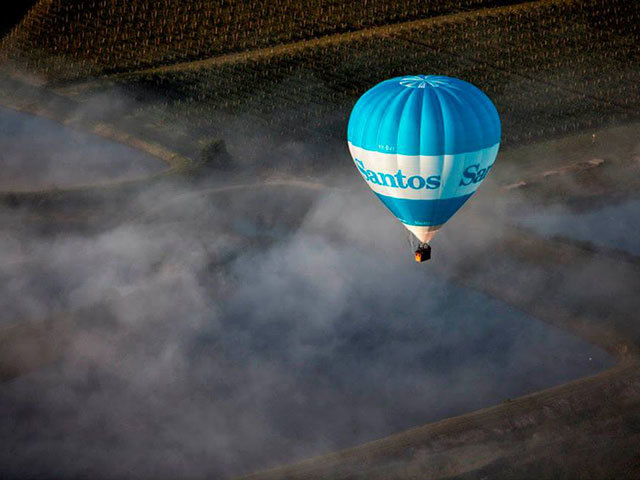
Despite a proposed carbon capture and storage (CCS) scheme, the Santos-led (ASX:STO) Barossa liquefied natural gas (LNG) project in Australia, will continue to release financially risky carbon dioxide emissions onsite, onshore and across the supply chain. This makes it one of the more expensive and dirtiest gas projects in the world, according to a new report from the Institute for Energy Economics and Financial Analysis (IEEFA).
IEEFA’s new report claims that investing in unproven and economically unfeasible carbon capture (CCS) technologies will not only delay the Barossa project and significantly increase project costs – polluting emissions will still be released into the climate across the LNG producing operation and supply chain – making the company’s net zero target simply “greenwash”.
Chemical engineer and IEEFA guest contributor John Robert said that while operator Santos is desperately trying to bend its Barossa proposal into a zero carbon project, it’s simply not possible.
“Barossa gas has an unusually high carbon dioxide content which makes the project possibly the dirtiest in the world,” said Robert.
“Whichever way you look at it, Santos’ proposed Barossa project is an emissions factory with an LNG by-product – there’s going to be more waste than product.”
Moreover, Santos is reportedly unlikely to commit investment into CCS for Barossa until government-backed carbon credits “make it stack up economically”.
Robert goes one step further in his report, suggesting that instead of just making announcements to attract investors and subsidies, Santos should be required to show that it can implement the CCS scheme as part of the Barossa development and to demonstrate its satisfactory operation before commencing exports of Barossa gas as LNG at Darwin in northern Australia.
“The proposed capture and storage adds substantially to the Barossa project’s costs, complexity, risks, lengthens its schedule, and thus diminishes its viability,” said Robert.
The report notes the majority of the project’s emissions arise from combustion, and suitable capture processes are not economically feasible either onshore or offshore.
“The modifications and new infrastructure required – and yet to be approved – across the project development would be too costly and sure to delay the project beyond its planned 2025 start date,” noted Robert.
Earlier this year, Santos’ announced that it planned to use East Timor’s ageing Bayu Undan field for a CCS project in the Timor Sea.
“Santos’ current partner in Barossa, South Korea’s SK E&S, and potential partner Japan’s Jera, plus Santos’ partners in Bayu-Undan including Italy’s Eni, South Korea’s SK E&S and Japan’s Inpex, Jera and Tokyo Gas should all heed these warnings,” warned Robert.
“The carbon dioxide (CO2) content of Barossa gas is extremely high – about twice that of the next highest gas resources currently being converted to LNG in Australia. It is also much higher again than the gas feeding LNG plants in competitor LNG exporting countries – in a market growing increasingly sensitive to emissions arising from its purchases,” noted IEEFA.
“The average emissions intensity of Australian-made LNG is approximately 0.70 tonne CO2 per tonne of LNG produced, whereas LNG from the Barossa project would have an emissions intensity of 1.47 tCO2/t LNG before it is transported and burnt in North Asian markets. That makes both the product and the project itself in need of being saved or abandoned, as the majority (57%) of emissions are from combustion, and capture of that is not practical,” according to the IEEFA report.
“Unlike Chevron at its Gorgon CCS project, this time around Santos should be obliged to be as good as its word and be required to implement the CCS scheme as part of the Barossa development and to demonstrate its satisfactory operation before reaching full LNG output at Darwin and commencing exports of Barossa gas as LNG,” said IEEFA.